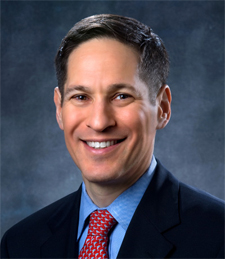The latest data is clear — the opioid epidemic in the United States is still growing.
“Too many Americans are feeling the devastation of the opioid crisis either from misuse of prescription opioids or use of illicit opioids,” said CDC Director Tom Frieden.
More than 52,000 Americans died from a drug overdose in 2015, and 33,000 — or 63 percent — involved an illicit opioid or prescription. It’s an ongoing concern for researchers and public health officials who have seen more than 300,000 Americans die from an opioid overdose.
The deaths mostly stem from heroin and illicitly manufactured fentanyl, a synthetic opioid. Pain medicine abuse, especially with morphine, codeine, oxycodone and hydrocodone, is up as well. The abuse increased in 30 states, stayed stable in 19 states and went down in two Southern states, Florida and South Carolina, before bumping up again in 2015.
The so-called epidemic is part of a larger conversation around pain and pain medicine prescriptions in the U.S. in recent years. Some say doctors prescribe too many pain pills to people who don’t need them, whereas some pain medicine experts call pain relief a “human rights issue.”
The epidemic has “stigmatized all patients with pain,” Kathleen Foley, a Memorial Sloan Kettering Cancer Center neurologist, said at a symposium on pain and pain medicine in early December.
The CDC issued new guidelines in March this year to help primary care doctors understand when to prescribe opioids. The 12 guidelines suggest certain medicines, dosages and durations for chronic pain that lasts longer than three months. For the most part, CDC officials recommend nonopioids for chronic pain, the lowest possible dosage, the shortage duration, and close monitoring of patients on opioids.
The guidelines sparked controversy among groups such as the American Chronic Pain Association, U.S. Pain Foundation, American Medical Association and American Cancer Society, as well as individual doctors. And the guidelines still leave medical payers, such as Medicare, Medicaid, the Department Veterans Affairs and insurance companies, to answer for the pain medicine payments. For instance, the guidelines don’t include details about severe pain associated with cancer, palliative care and end-of-life care.
“More than 40 Americans die each day from prescription opioid overdoses,” Frieden said in March when issuing the new guidelines. “We must act now.”
Carolyn Crist is the assistant editor of Paste Science. She is a freelance health and science journalist for regional and national publications and writes the Escape Artist column for Paste Travel.
